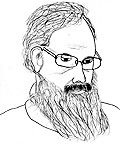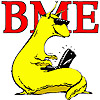| Date (to be) released | Assignment | Date Due |
|---|---|---|
| 2014 Oct 1 | prereq survey | Mon 6 Oct 2014, 12:30p.m. |
| 2014 Oct 1 | Python scaffold | Fri 10 Oct 2014, 12:30p.m. |
| Mon 6 Oct 2014 | parsing FASTA and FASTQ | Fri 17 Oct 2014, 12:30p.m. |
| Thurs 16 Oct 2014 | fellowship application | Fri 24 Oct 2014, 12:30p.m. |
| Wed 22 Oct 2014 | Markov chains | Fri 31 Oct 2014 12:30p.m. |
| Thurs 30 Oct 2014 | finding under/over-represented palindromes | Fri 7 Nov 2014, 12:30p.m. |
| Wed 4 Nov 2014, 17:15 | protein information | Fri 14 Nov 2014, 12:30p.m. |
| Thurs 13 Nov 2014, 18:45 | null models | Fri 21 Nov 2014, 12:30p.m. |
| Tues 18 Nov 2014, 19:48 | affine-gap alignment | Wed 3 Dec 2014, 12:30p.m. |
| Mon 1 Dec 2014, 15:40 | peptide libraries from degenerate codons | Wed 17 Dec 2014 4p.m. |
Every student in the class will need a School of Engineering computer account. I will want assignments turned in by providing me with a publicly readable file (PDF for written assignments) or directory (for multi-file assignments) containing the assignment on the SoE machines. All Python programs must execute correctly on the SoE machines, without needing to install additional Python modules. I will run the programs using python2.7 or python3.4, which is not the default python on most SoE machines (some of which have archaic versions like 2.4.3 as the default). Programs that fail to run (because they are Windows-formatted files or because permissions have been set wrong) will be returned ungraded, and will need to be redone.
I want paper copies of assignments in addition to the electronic ones (to save me the time and hassle of printing them), but I will accept electronic-only submissions from those who are too ill to attend class.
To get an SoE computer account see http://support.soe.ucsc.edu/new-accounts
Evaluation
There will be three types of assignments for the class:- reading assignments,
- programming exercises to learn Python, and
- bioinformatics exercises/papers using real data.
As has been my practice since Fall 2001, there will be no exams, and we will probably not meet during the final exam period (Wed 17 Dec 2014, 4–7 p.m.) It turns out to be very difficult to make up small enough problems for examination—almost all the homework exercises are much larger problems than could reasonably be given on a timed exam.
The assignments will be distributed on the web.
The relative weights of the different types of assignment in the evaluation has not been determined yet—it should be roughly proportional to how much time the different assignments take to do well. In the past this has meant roughly equal weights for assignments, with the first programming assignment having somewhat less weight and the alignment assignment having somewhat more weight.
I expect that most of the assignments will be similar to ones given in previous years, with a few parts tweaked to update them, but I may replace one or more assignments with new ones, if I can think of new problems at the appropriate level of difficulty.
Academic Integrity
Anyone caught cheating in the class will be reported to their college provost (see UCSC policy on academic integrity) and may fail the class. Cheating includes any attempt to claim someone else's work as your own. Plagiarism in any form (including close paraphrasing) will be considered cheating. Use of any source without proper citation will be considered cheating. If you are not certain about citation standards, please ask, as I hate having to fail students because they were improperly taught how to cite sources.
Collaboration without explicit written acknowledgment will be considered cheating. Collaboration on lab assignments with explicit written acknowledgment is encouraged—guidelines for the extent of reasonable collaboration will be given in class.
Classroom Accommodations for Disabilities
If you qualify for classroom accommodations because of a disability, please submit your Accommodation Authorization from the Disability Resource Center (DRC) to me during my office hours in a timely manner, preferably within the first two weeks of the quarter. Contact DRC at 459-2089 (voice), 459-4806 (TTY).Rough list of topics we'll probably cover (not necessarily in order)
Note: The schedule will be updated throughout the quarter to reflect what really happens.- Quick review of the fundamental dogma of biology:
DNA->RNA->protein, bases, codons, amino acids, ...
(2 hours) - Introduction to Python. Read the material at http://users.soe.ucsc.edu/~auzilov/BME205/Fall2011/ over the weekend and try to understand the code in the tarballs.
- Stochastic models, Bayes Rule, 0-order Markov chain, first-order Markov chain, length model versus stop character for finite strings, use of log-probability for computations, adding probabilities in log-prob representation (efficient computation of log(exp(x)+exp(y)) ). (1.5 hour)
- Constructing a model from data. Training, cross-training, and testing. Maximum-likelihood estimate. Pseudocounts to get mean posterior estimate. (1.5 hours)
- Converting arbitrary scores to stochastic models: P-value and E-value. Brief discussion of Z-scores (Gaussian dist.) and fat tails of extreme-value (Gumbel dist.) (1.5 hour)
- Entropy, relative entropy, Mutual information, sequence logos. (1.5 hour)
- What fellowship reviewers look for. Relationship between relative entropy and difference in encoding cost in a train/test framework (clarification for homework exercise). Interpreting classification results: true/false positives, specificity, sensitivity, ROC curves, ROC_n numbers What is a substitution matrix? (1.5 hour)
- Substitution matrices and sequence alignment scores. Aligning sequences to sequences, dynamic programming We'll do the the simple, but inefficient algorithm (for arbitrary gap costs) first. (1 hour: Blosum substitution matrices and gapless scoring) (1 hour: the alignment problem and global dynamic programming with arbitrary gap costs) (1 hour: global dynamic programming with linear gap costs, traceback) (1 hour: affine gap costs. Global and local dynamic programming)
- Introduction to Hidden Markov models (1.5 hour on HMMs and profiles) (1.5 hours on profile HMMs giving Viterbi algorithm and forward-backward)
- Pair HMMs as a way of explaining alignment algorithms (3 hours?)
- Mon Nov 3. Guest lecture. Christy Caldwell will give a presentation on bioinformatics resources available through the library, as well as talking about some of the challenges that face the UCSC library in building an adequate collection in new fields like bioinformatics. We may meet in the Science Library for the guest lecture.
- Protein secondary structure (DSSP and STRIDE), in order to explain second track of 2-track HMM. Discuss secondary structure prediction using neural nets. (1.5 hours)
- Sequence weighting (Henikoff's technique for relative weighting and target bit savings for total weight) (1 hour) Multiple alignment techniques Overview and progressive alignment (0.5 hour)
- Fast methods for searching (BLAST and BLAT). (In some years, Jim Kent has given an excellent lecture on these.)
- Multiple alignment techniques:
Muscle, Probcons, AMAP
documentation on MUSCLE:
http://www.drive5.com/muscle/docs.htm Refereed paper: Edgar, Robert C. (2004), MUSCLE: multiple sequence alignment with high accuracy and high throughput, Nucleic Acids Research 32(5), 1792-97.PROBCONS web site (including overview of algorithm): http://probcons.stanford.edu
AMAP http://bio.math.berkeley.edu/amap
Ariel S. Schwartz and Lior Pachter
Multiple alignment by sequence annealing
Bioinformatics 2007 23(2):e24-e29; doi:10.1093/bioinformatics/btl311Oher multiple alignment programs:
paper on T-coffee:
T-Coffee: A novel method for fast and accurate multiple sequence alignment.
Notredame C, Higgins DG, Heringa J.
J Mol Biol 2000 Sep 8;302(1):205-17
doi:10.1006/jmbi.2000.4042 - Phylogeny: brief mention of maximum-likelihood and parsimony. Additivity assumption. UPGMA algorithm presented, ultrametric assumption and molecular clocks, intro to neighbor-joining (no proofs) (1.5 hour)
- RNA structure and Stochastic Context-Free Grammars (1.5 hour)
- A protocol for evaluating local structure alphabets.
This talk (
http://www.soe.ucsc.edu/~karplus/papers/local-structure-germany02.pdf)
presented some of the main results from Rachel Karchin's PhD
thesis. The following two papers are the guts of the method:
Rachel Karchin, Melissa Cline, Yael Mandel-Gutfreund, and Kevin Karplus. Hidden Markov models that use predicted local structure for fold recognition: alphabets of backbone geometry. Proteins: Structure, Function, and Genetics, 51(4):504–514, June 2003. doi:10.1002/prot.10369 reprint
Rachel Karchin, Melissa Cline, and Kevin Karplus. Evaluation of local structure alphabets based on residue burial. Proteins: Structure, Function, and Genetics, 55(3):508–518, 5 March 2004. doi:10.1002/prot.20008 reprint
Topics for last week requested by students
Rough list of topics we didn't have enough time to do more than briefly mention in recent years.
- Contact order and folding rate.
In 2001, I handed out paper on contact order:
Contact order, transition state placement and the refolding rates of single domain proteins.
Plaxco KW, Simons KT, Baker D.
J Mol Biol 1998 Apr 10;277(4):985-94 - Phylogenetic analysis
- DNA microarrays and expression data
- Gene finding
- Proteomics
- RNA structure
- DNA assembly
- Structure-structure alignment
- RNA genes, DNA microarrays, computational and functional genomics Look at the BME 210 course, the BME 230 course, and the lab pages for Todd Lowe and Josh Stuart.
- Combining secondary structure, fold-recognition, and new-fold methods for protein structure prediction. Using the transparencies given at Schloss Dagstuhl. I could have handed out book chapter on SAM-T2K, but didn't.
Other resources on the web
- http://genome.ucsc.edu/
- UCSC Genome Browser—gateway to at least 47 eukaryotic genomes.
- http://microbes.ucsc.edu/
- UCSC Microbial Browser—gateway to more than 300 archeal and bacterial genomes.
- User's Guide to the Human Genome (in Nature Genetics).
|
|
| BME 205 home page | UCSC Bioinformatics research |
Questions about page content should be directed to
Kevin Karplus
Biomolecular Engineering
University of California, Santa Cruz
Santa Cruz, CA 95064
USA
karplus@soe.ucsc.edu
1-831-459-4250
318 Physical Sciences Building



